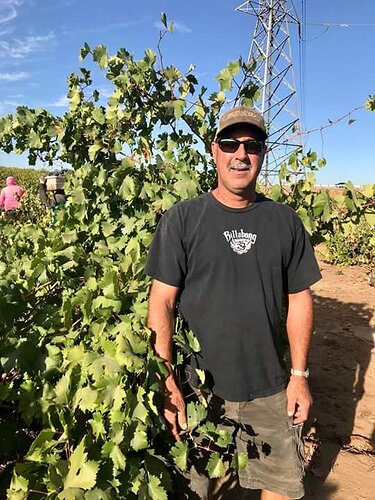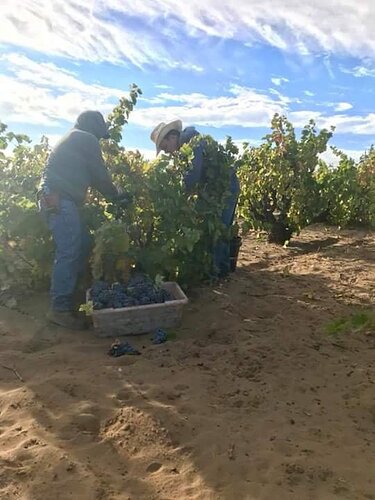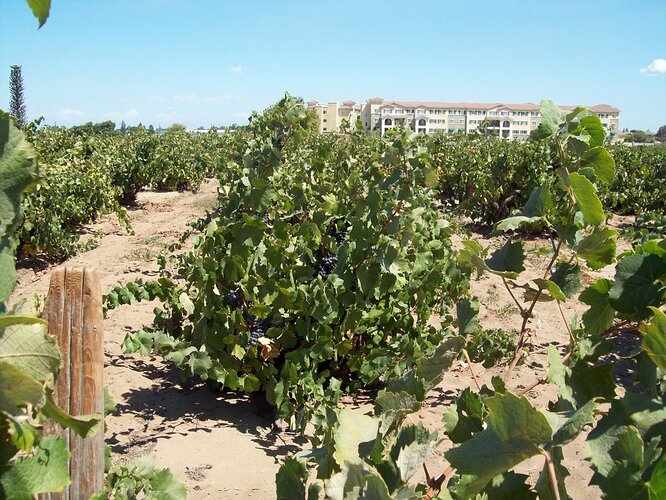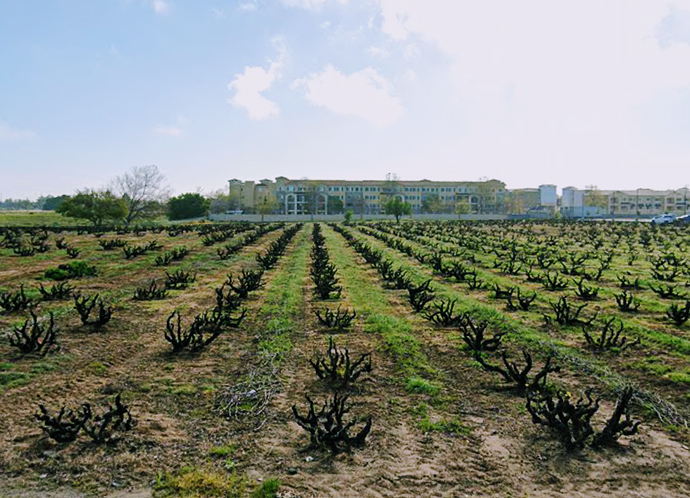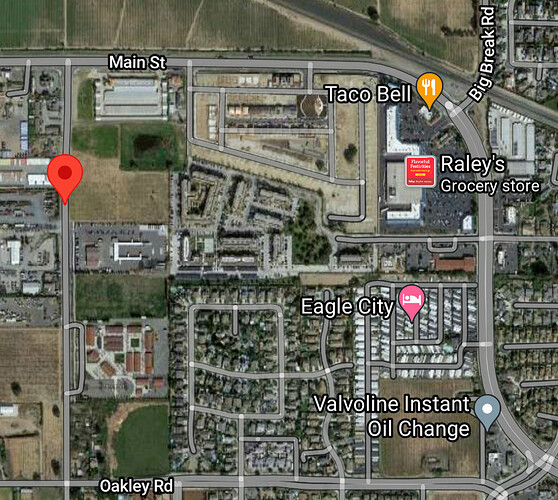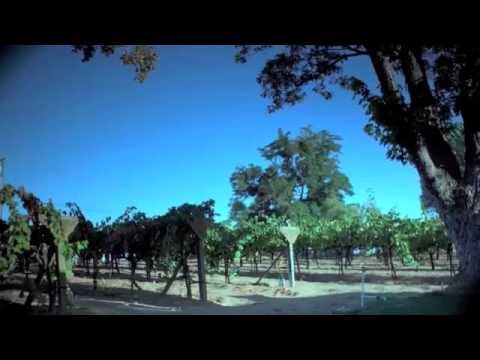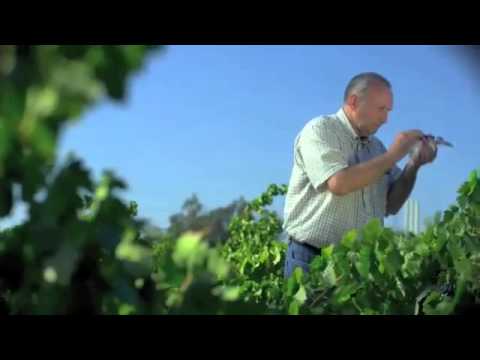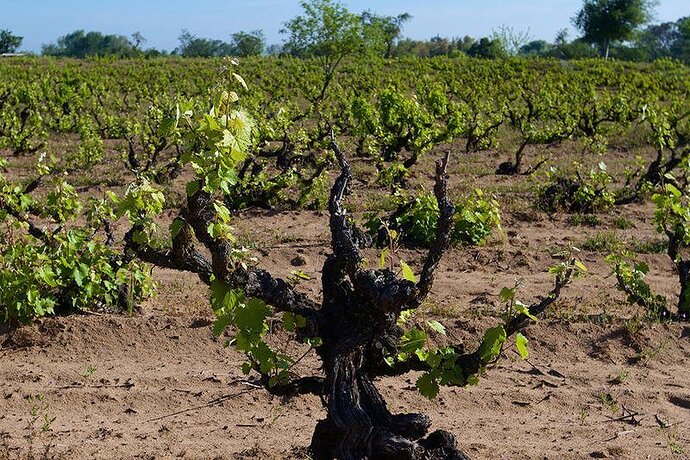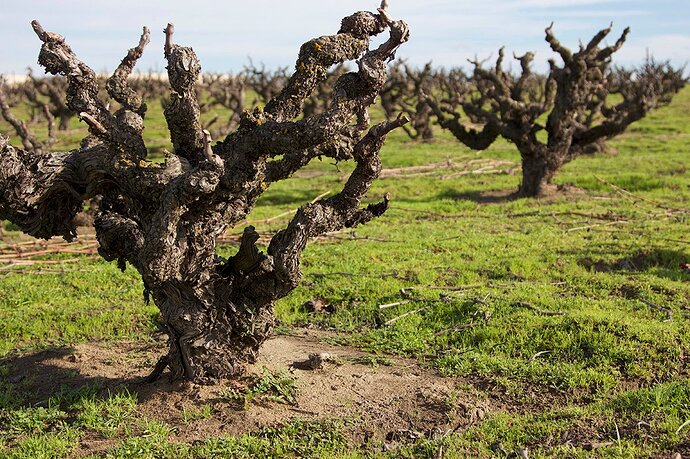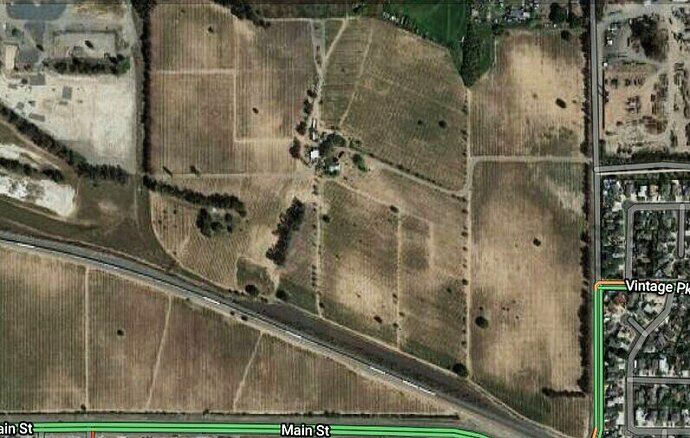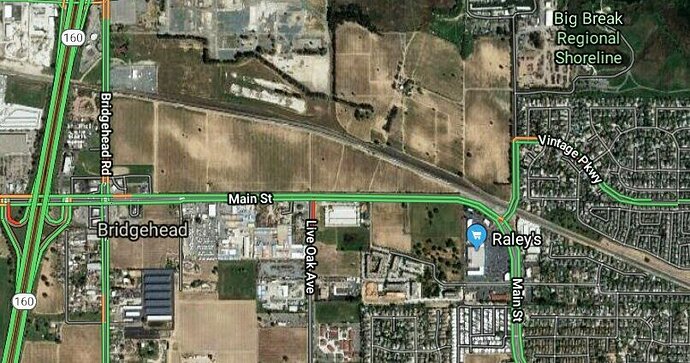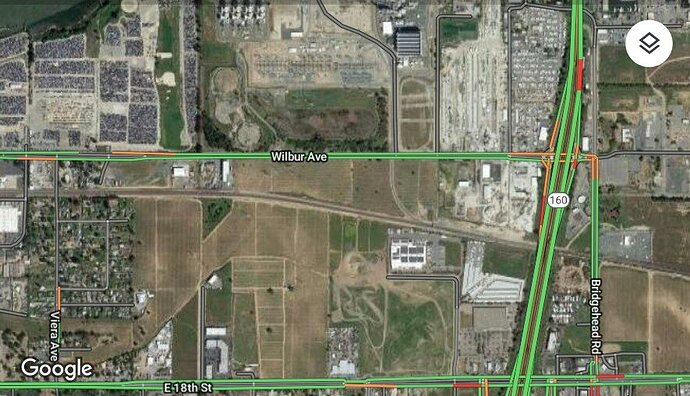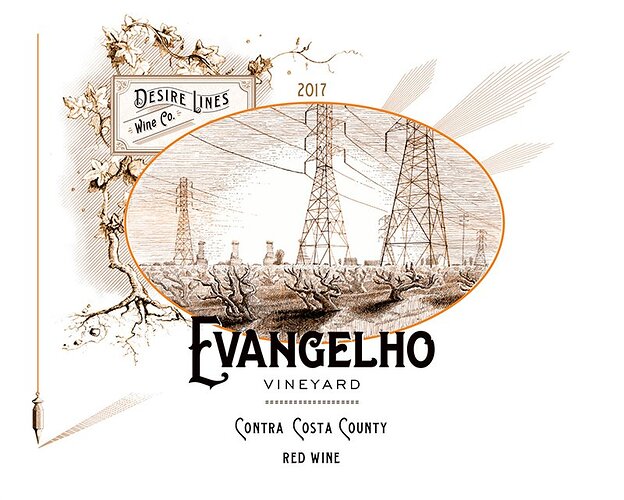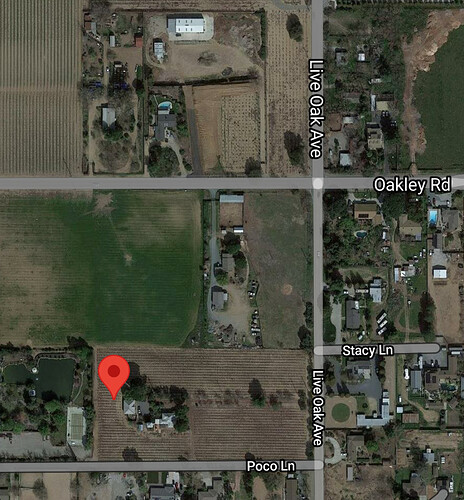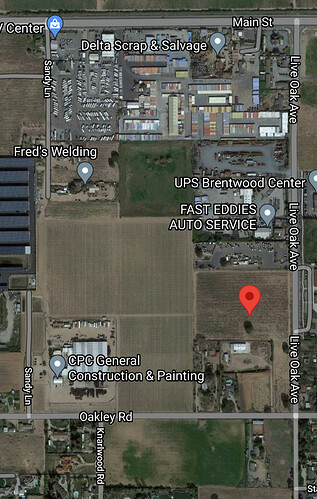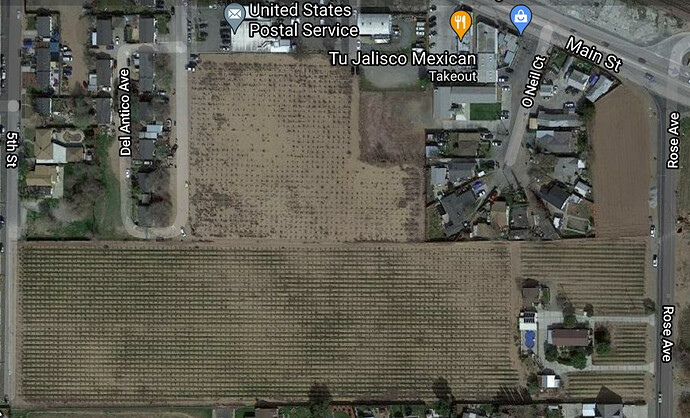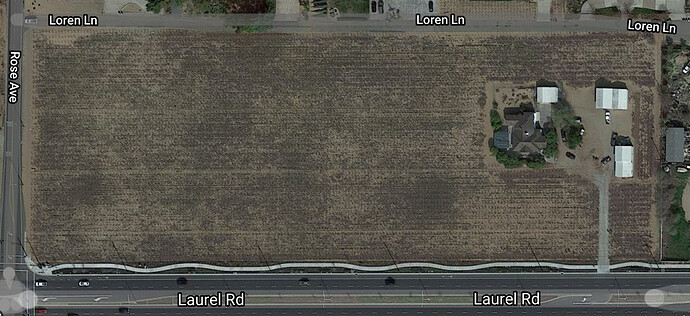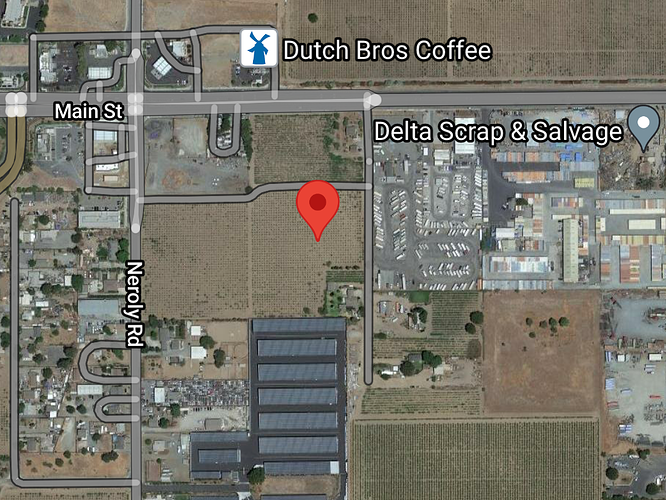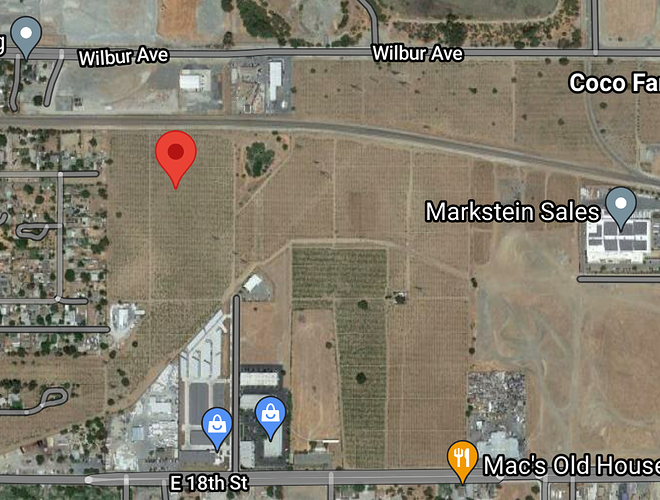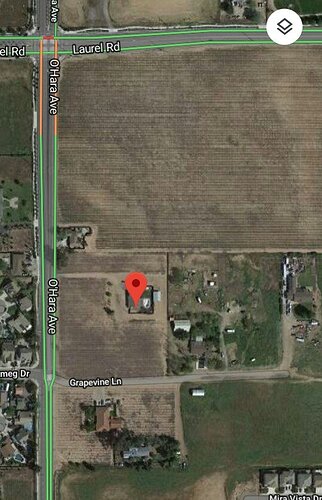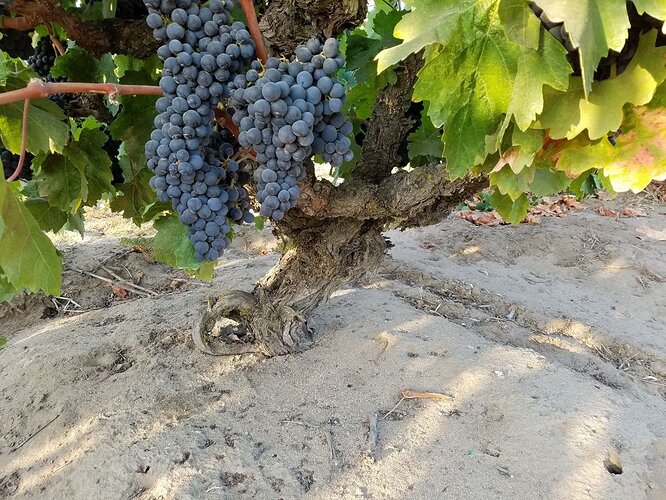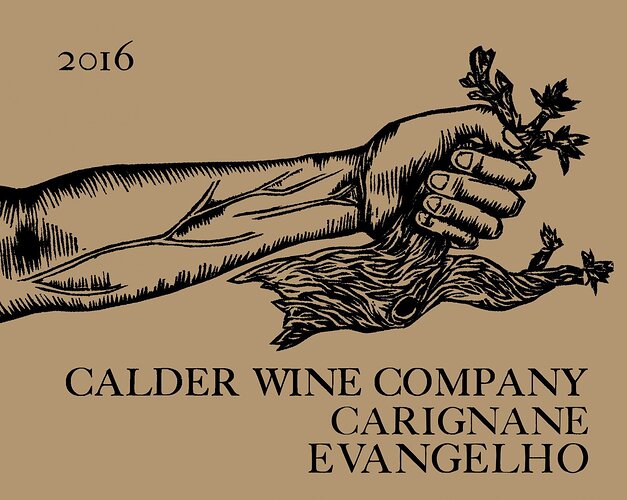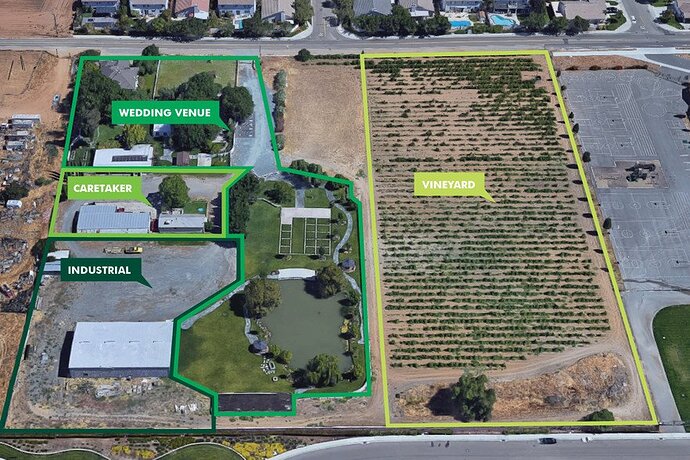“Del Barba Vineyard” @
4631 Rose Ave, Oakley
Wines from Rose Ave “Del Barba Vineyard” (Oakley, CA):
•
Kreck Wines:
https://kreckwines.com
Kreck ‘Del Barba Vineyard’ Old Vine Zinfandel:
“Flavors of blackberry pie, dried figs, and ripe plum layered with white pepper and toffee. Big, bold Zinfandel fruit with layered nuances continue to evolve from beginning to end. A full mouth feel and viscous middle is balanced by the moderate acidity.”
• Oro en Paz:
https://oroenpaz.com
Oro en Paz 2015 ‘Del Barba Vineyard’ Carignan:
“Made from century old, head-trained, own-rooted vines currently farmed by 4 generations of the Del Barba family. Opens with bright cherry, plum, black currant, and a touch of flint. It has smooth and light tannins and a beautiful balance between florality, fruit, and earth. The wine fermented naturally and aged in a rustic and traditional style.”
• Wilson Foreigner:
http://www.wilsonforeigner.com
Wilson Foreigner 2017 Zinfandel, ‘Del Barba Vineyard’, Contra Costa County:
“The Zinfandel comes from a historic vineyard in Contra Costa County, owned and farmed by the past four generations of the Del Barba family. The fruit was harvested on the morning of August 24th. Fermented by ambient yeasts in a concrete tank, with fifteen percent whole cluster, the must was pressed ten days after harvest. Primary and malolactic fermentation finished in neutral French oak barrels, no additions were made except for sulfur dioxide, and the wine was bottled without any fining or filtration. True to the vineyard and variety, the wine is classically ripe, with freshness and a finely-grained texture. Rich plum and blueberry flavors are balanced by clean acidity.”
From an reply clarifying from which Del Barba family property Wilson-Foreigner sourced its grapes:
“Thank you for the question. The Del Barba family has several parcels throughout Oakley, our Zinfandel is sourced from their 40-acre vineyard off Rose Avenue.”
Wines from Laurel Rd “Del Barba Vineyard” (Oakley, CA):
•
Wingspan Wines:
https://www.wingspan.wine
Wingspan ‘Moons of Neptune’ ‘Del Barba Ranch’ Old Vine Zinfandel:
"Strawberry, chocolate, cigar box, plum, cedar nectarine, with great minerality + structure.
“‘Moons of Neptune’ Old-Vine Zinfandel comes for a historic California vineyard, ‘Del Barba Ranch’. This 100-year-old, own-rooted vineyard is full of unruly, head-trained vines. Planted in sand, in what was once an ancient seabed, it’s withstood phylloxera, Prohibition, and other plights upon California farm land over the last century. Organic and dry-farmed, this vineyard yields a powerful and concentrated fruit.”
I am uncertain whether the
Wingspan Zinfandel is sourced from the Del Barba family’s property on Rose Ave, Laurel Rd, or a different site (
“Oakley Rd Vyd”, etc).
 Wines from the “Oakley Road Vyd / Del Barba Vyd”:
Wines from the “Oakley Road Vyd / Del Barba Vyd”:
•
Once and Future Wine Company:
https://www.onceandfuturewine.com
Once & Future 2016 Contra Costa Mataro, ‘Oakley Road Vineyard’:
"Mourvedre, the famous grape of Bandol, is known by the name Mataro in California. The Mataro grape has been planted in California since the 1870s, mostly as an adjunct in blends that were Zinfandel dominated. Though scarce, Mataro is an exceptional standalone grape in a few places. One of those is Oakley.
“In the eastern rain shadow of Mount Diablo near the San Joaquin River, vines on their own roots planted in sand dune-like soils in the late 1800s and early 1900s continue to produce some of the most interesting and highly regarded Mataro in California. The climate conditions are perfect for slow ripening grapes like Mataro. The smoky, soft cherry, plum flavors are well developed and full, with the acid perfectly balanced and the tannins soft and round.”
Once & Future 2016 Contra Costa Zinfandel, ‘Oakley Road Vineyard’:
“‘Oakley Road’ Zinfandel is planted on the same sandy slopes as the ‘Oakley Road’ Mataro. These vines, planted around 1900, are on their own roots. Coming out of the sand with multiple arms like hydra, they are truly bush vines. Unlike most other California Zinfandel vineyards, the fruit is carried relatively low to the ground. The proximity to ground acts as shelter from the wind, which can be moderately intense in the afternoon in Oakley, while reflecting radiated light and heat back on the grapes from the sandy soils. The vineyard has about 10 percent Carignane and Mataro interplanted with the Zinfandel. The sandy soils and the own-rooted vines tend to produce unique, suave, textural characteristics in the wines. The wines have bright, ripe flavors, and are very spicy, with fresh acidity and smooth fine tannins in the finish.”
Wines from the “Sandy Lane / Gonsalves Vineyard” (Oakley, CA):
•
Cinnabar Winery:
https://www.cinnabarwinery.com
Cinnabar 2016 Mourvèdre Contra Costa ‘Sandy Lane Vineyard’:
“Brierberry, Mushroom, Cured Meats”
“
The Land: ‘Sandy Lane Vineyard’ overlooks the Sacramento Delta near the town of Oakley. Called
‘the oldest inter-planted vineyard in California’, it was inter-planted with Mourvèdre, Zinfandel, and Carignan on St. George rootstock in the early 20th century. These ancient head-trained, spur-pruned vines benefit from the cooling effects of the Delta and are dry farmed in soils as sandy as any beach.”
“
The Season: 2016 saw more rainfall than in the previous five years, bringing some relief to an ongoing drought. Temperatures on average were warm, producing grapes that were fully ripe with above-average crop size.”
Cinnabar 2015 Carignan Contra Costa, ‘Sandy Lane Vineyard’:
“Black Cherry, Cedar, Licorice”
“
The Season: In early 2015, California experienced 30% more rainfall than in prior years, easing concerns over a possible fourth consecutive drought. Bud break in March was normal, but May was cold and wet, disrupting bloom and reducing crop loads up to 40% in some areas. Despite this, the vintage produced wines that are more structured, ensuring greater ageability.”
•
Suncé Winery:
https://suncewinery.com
Suncé 2015 Carignane ‘Sandy Lane Vineyard’, San Francisco Bay
Suncé 2015 Mourvedre ‘Sandy Lane Vineyard’, San Francisco Bay
•
Trinitas Cellars:
http://www.trinitascellars.com
Trinitas 2013 ‘Old Vine’ Mataro:*
“
Vineyard Details: Mataro (aka Mourvèdre) is grown in the
‘Gonsalves Vineyards’ in the eastern hills of Contra Costa and hand picked at 28° brix to hone in on mature and deeper flavor development on the vine. With vines dating back over 90-plus years, the mature vines produce low yields that are focused and concentrated in their flavors.”
“
Tasting Notes: The 2013 Mataro is a beautiful wine with a luscious ruby red color. The nose is rich with bright notes of muddled strawberries, cinnamon sticks, and smoked Cherrywood. The palate is dense and structured. The big cherry, blueberry, and strawberry notes are bold and hit you in the cheeks with flavor. The Mataro also has hints of cedar, hickory, and vanilla, with a nice finish of cherries jubilee.”
•
Trinitas 2013 ‘Old Vine’ Petite Sirah:
“
Vineyard Details: The
Trinitas Old Vine Petite Sirah comes from the
‘Sandy Lane Vineyard’ in the town of Oakley in Contra Costa County. Our growers, the Gonsalves family, have been growing grapes since 1892 here and some of the original vines are still producing our Petite Sirah.”
“The vineyard has sandy soil, thus the name of the vineyard, which is important for two key reasons. First, phylloxera cannot live and breed in sandy soil types; this key fact allowed this vineyard to survive the multiple onslaughts of phylloxera that has plagued Northern California in the last 150 years. Secondly, the sandy soil allows for great drainage and promotes the vines forming strong and deep root systems. The old vines produce small tonnages per acre and tiny berries which both combine to create incredible intensity of structure and flavor.”
“Tasting Notes: This is ink in a bottle! The color is highly extracted from the 100+ year old vines. Too many people pass by the Petite Sirah in favor of Cabernet Sauvignon. This wine represents a excellent value for a full-bodied wine. The nose offers dense aromatics of fruitcake, brier, vanilla, baking spices, and strawberry. The palate is dominated by jammy blackberry, with notes of espresso and spice. The palate is structured with complex layers of uber ripe dark fruit, dried cherry, persistent oak and a vanilla tinged finish. Aged exclusively in American oak barrels.”
Trinitas’ website’s listings for the 2014 vintage bottlings lack detailed breakdowns of the vineyard, sources, and tasting notes. As prior vintages of Contra Costa wines were sourced from the Gonsalves family’s “Sandy Lane Vineyard”, I presume that the same is true as well for those from the 2014 vintage.
The Del Barba family owns, leases, or farms at least 4 different vineyards in the Oakley area. The Cecchini brothers help Tom Del Barba & Co. care for the plantings.
The Gonsalves family’s Sandy Lane Properties holdings and farming contracts, manage farming for +10 vineyards in Eastern Contra Costa County, with upwards of 100 acres under its care!
Words of Wisdom from Mr Joel Peterson on the “Oakley Road Vineyard” (specifically) and Centenarian Viticultural Sites in Eastern Contra Costa (generally):
“…This part of Contra Costa (CoCo for short) is changing rapidly. It has been an industrial backwater for a long time. High tension electrical lines, a PG&E power plant, and motels that rent by the hour stand in contrast to an inordinate number of churches and an increasing reality of fast food restaurants that populate a disjointed human landscape. There is increasing urbanization as roads are widened and BART pushes east. Many of these vineyards are for sale with inflated land prices, having been designated as commercial land - the result being land costs that are more compatible with strip malls than farming. For now, the vines remain in the ground, producing viticultural treasure. And for now, we continue to make lovely wine and cherish our moment.”
*** EDIT ***
Sandlands “Contra Costa” red wines have been sourced from the “Oakley Road Vyd”.
The number of wineries bottling wines from the Gonsalves family’s (Sandy Lane Properties) NE Antioch properties (“Little Big Patch Vyd” & “Sand Trap Vyd”) has increased significantly over the past few vintages. Both plantings, located along E 18th Street, in all likelihood will not see many more years.

